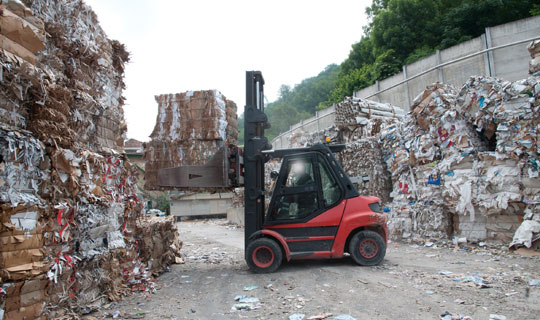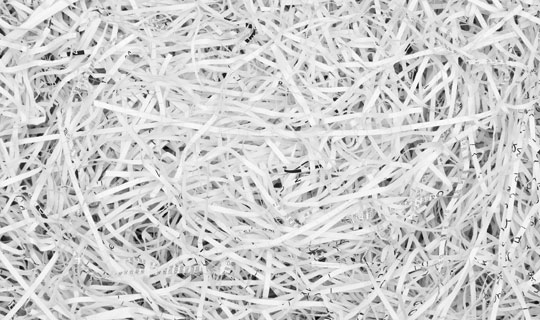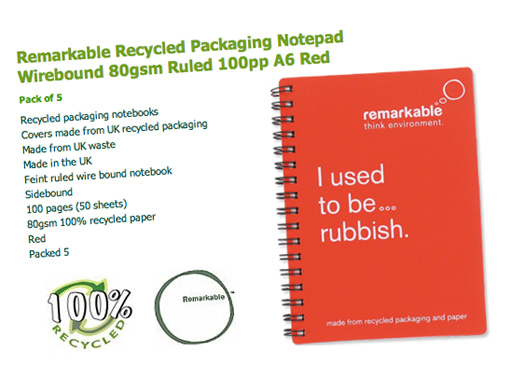How it Works
Recycling is the process of collecting certain materials that would otherwise be considered waste – old metal, paper, wood, plastic, even food – and turning them into new “recycled” products and, thereby, reducing the amount of waste that reaches landfill or incineration plants.
Recycling, rather than throwing things away, is also better for the environment. Generally it is agreed that the amount of carbon dioxide in the earth’s atmosphere is causing climate change which can have devastating long term effects. Recycling is one of many ways that we can cut down the amount of carbon dioxide released into our atmosphere.
Take our guided tour below through the six stages of the recycling process to see how it all fits together... enjoy!
Separation

- In order to begin the process of closing the loop, we need to separate recyclable materials from waste.
- Loop will ensure that segregation at source is user-friendly and easy to achieve.
- We can draw on our clients' different experiences to tailor a workable scheme for you.
- Recyclable materials can either be collected separately or comingled.
- In general, separation is the staff's responsibility.
Storage

- It is more cost-effective and eco-friendly to store an optimum amount of recyclable material. However, we are acutely aware of the scarcity of storage space and design our schemes accordingly.
- Should you have no internal storage available at all then we can provide suitable external containers or arrange sufficiently frequent collections.
- We will carefully assess your particular needs and advise you on the value of space saving equipment, such as balers or crushers.
- In general, storage is the cleaners' responsibility.
Collection

- A reliable collection service is vital to any scheme's success. We have our own collection teams and also work closely with other service providers to ensure that they are properly briefed and that you are satisfied with their performance.
- Uniformed drivers follow a strict code of conduct and are usually very courteous and helpful.
- When applicable, you will receive signed receipts for collections so that you can efficiently monitor service levels.
- Almost always, collection is our responsibility.
"The case for recycling is strong. The bottom line is clear. Recycling requires a trivial amount of our time. Recycling saves money and reduces pollution. Recycling creates more jobs than landfilling or incineration. And a largely ignored but very important consideration, recycling reduces our need to dump our garbage in someone else's backyard."
David Morris of the Institute for Local Self-Reliance
Bulking

- Materials are usually recycled separately according to type. The bulking activity for these different materials provides many jobs sorting, loading and transporting the materials in large enough quantities to make the process viable.
- The baled, granulated, containerised or crushed material is then graded and transported on large articulated lorries to the various different mills, furnaces, smelting plants and other suitable facilities up and down the country for reprocessing.
Reprocessing

- Most materials, such as glass, metals and paper are normally reprocessed back into their original incarnation. Exceptions include plastic cups which are converted into all manner of things such as pencils, key fobs, garden furniture and even ice scrapers. Also, some crushed glass is used as an aggregates substitute.
- Fluorescent tubes are broken down into constituent materials for recycling or distillation. Composting of organic waste closes the loop neatly as much of the produce that we harvest rots down to make a good quality soil conditioner.
- It is at this stage that the effects of contamination are most damaging as maintaining high quality standards is essential to the process.
Re-Supply

- Presently, the most pressing concern in recycling terms is establishing secure markets for recyclables so that the loop is closed in a sustainable way.
- It is important to try, wherever possible, to source recycled products as alternatives to those made from virgin materials. Fortunately, the days of poor quality and high price have long gone and it is now possible to buy good quality products made from recycled material.
- Reviewing your procurement policies to favour recycled products is in line with most environmental policies and means that you can be more confident in publicising your green credentials.
- In an office, the best starting point is to use recycled copier paper and re-manufactured toner cartridges. The list of available products is ever lengthening and there is no noticeable difference in quality.
